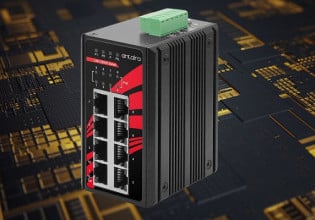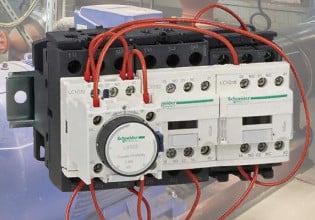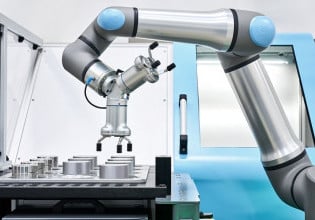Siemens Highlights Digital Twinning as Part of Automate 2022 Technology Demonstrators
At the Detroit show, Siemens is displaying developments in areas that include digital twins, robotic integration, CNCs, PLCs, and Real-Time Locating Systems. Their portfolio of products and services are part of their Total Integrated Automation (TIA) engineering and automation platform.
Automate 2022, the annual automation conference, is happening right now (June 6-9) in Detroit, MI and the Control.com team is here bringing you some of the highlights. The event focuses on the latest advancements in hardware and softwares solutions in the industrial and manufacturing world. An array of Computer Numerical Control (CNC) machining equipment, motion controllers, variable speed drives (VSD), servo motors, Programmable Logic Control (PLC) systems and other such automation and motion control equipment will be on display, inspiring engineers on ways to improve plant efficiency.

Siemens SINUMERIK ONE is a new generation of CNC providing digital-native control for shop-floor automation. Image used courtesy of Siemens
Digital Twins
Digital twins are an exact copy of a physical object in a digital format. They have been increasing in popularity over the past few years. This growing popularity is for obvious reasons; the digital twin can be used in various simulations and models, allowing it to be improved. The new digital model can then be used to create the next iteration of the object.
At Automate 2022, engineers can learn how a digital twin can help improve their design process. Through the creation of digital models, the prototyping phase of any product development can be improved. Because much of the modeling can be performed on a computer, there is little need to produce many prototypes for testing. Furthermore, the digital manufacturing processes can be performed to the digital twin so that engineers can optimize the physical manufacturing process, reducing trial-and-error on physical products.
Siemens' stated goal of their digital twin solutions is to shorten the machine builder’s time-to-market by simulating all machine design and operational kinematics prior to manufacturing. These digital models are expected to provide time and cost savings to both the builder and the end-user. The digital twin and associated simulations can be employed during the design, manufacturing, commissioning, startup and training phases of the product development life cycle.
As one example of digital twinning technology, Siemens has released SINUMERIK ONE, the first-ever, digital-native CNC for the machine tool industry. The SINUMERIK ONE controller works with software to create the real-world machine controller and its virtual digital twin.

Siemens SINUMERIK Run MyRobot application integrates robotics with CNC machines operated by a single controller. Image used courtesy of Siemens
Robotic Integration
Robots and collaborative robots (cobots) have been used in the manufacturing environment for decades. However, with robots in so many different types of industrial environments, there is something new to learn from each installation and integration. At Automate 2022, Siemens will demonstrate how robot integration has benefitted numerous industries, including examples and case studies. Because Siemens services virtually all manufacturing sectors, including semiconductors, pharmaceuticals, aerospace, renewable energy and others, there are plenty of opportunities for engineers to find something here that will benefit their facilities.

Real-Time Locating Systems (RTLS) from Siemens can track the location of factory assets and personnel and report data to the Totally Integrated Automation (TIA) portal. Image used courtesy of Siemens
Totally Integrated Automation (TIA)
Siemens offers the Totally Integrated Automation (TIA) engineering platform that is geared towards the creation of smart factories. TIA is not just a tool for linking machines together, but instead integrates machines with artificial intelligence (AI), block chain, cloud computing, 5G, cognitive computing and so many other systems. Smart factories that leverage TIA will be using data to drive decisions for everything from production schedules to preventative maintenance to raw material ordering.
Final Thoughts
Automate 2022’s three day showcase is an event worth attending by any plant engineer looking for new ways to let technology optimize industrial processes. Besides the main categories, there will be additional sections on cybersecurity, asset tracking, connectivity and communication protocols, and other hot-button issues in the manufacturing world.






